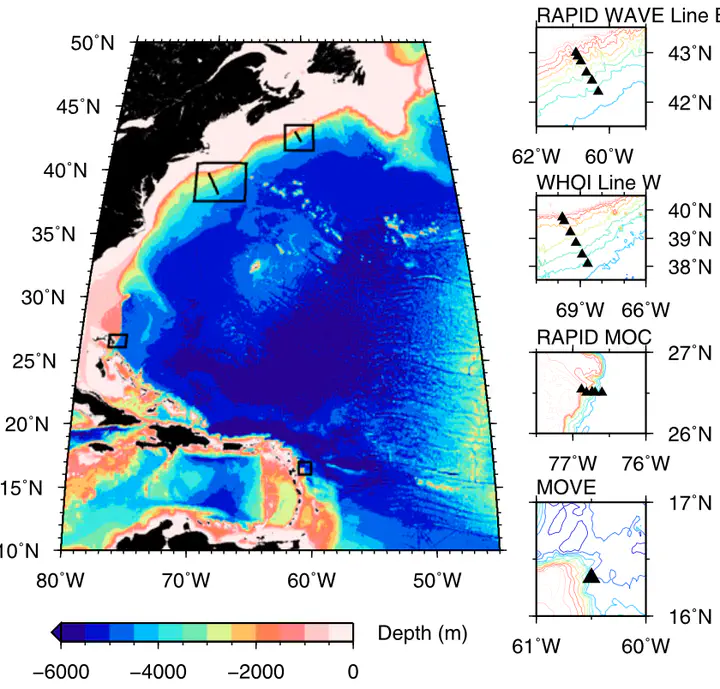Observed basin-scale response of the North Atlantic meridional overturning circulation to wind stress forcing
 (left) Western North Atlantic bathymetry and (right) locations of western boundary arrays used to derive western boundary overturning transports. At (left) the black longitude– latitude boxes delineate the close-ups at (right); (top)–(bottom) from north to south, these are RAPID WAVE Line B, Woods Hole Line W, RAPID–MOC/MOCHA (west moorings only), and MOVE array (west moorings only).
(left) Western North Atlantic bathymetry and (right) locations of western boundary arrays used to derive western boundary overturning transports. At (left) the black longitude– latitude boxes delineate the close-ups at (right); (top)–(bottom) from north to south, these are RAPID WAVE Line B, Woods Hole Line W, RAPID–MOC/MOCHA (west moorings only), and MOVE array (west moorings only).Abstract
The response of the North Atlantic meridional overturning circulation (MOC) to wind stress forcing is investigated from an observational standpoint, using four time series of overturning transports below and relative to 1000 m, overlapping by 3.6 yr. These time series are derived from four mooring arrays located on the western boundary of the North Atlantic: the RAPID Western Atlantic Variability Experiment (WAVE) array (42.5$^∘$N), the Woods Hole Oceanographic Institution Line W array (39$^∘$N), RAPID–MOC/MOCHA (26.5$^∘$N), and the Meridional Overturning Variability Experiment (MOVE) array (16$^∘$N). Using modal decompositions of the analytic cross-correlation between transports and wind stress, the basin-scale wind stress is shown to significantly drive the MOC coherently at four latitudes, on the time scales available for this study. The dominant mode of covariance is interpreted as rapid barotropic oceanic adjustments to wind stress forcing, eventually forming two counterrotating Ekman overturning cells centered on the tropics and subtropical gyre. A second mode of covariance appears related to patterns of wind stress and wind stress curl associated with the North Atlantic Oscillation, spinning anomalous horizontal circulations that likely interact with topography to form overturning cells.